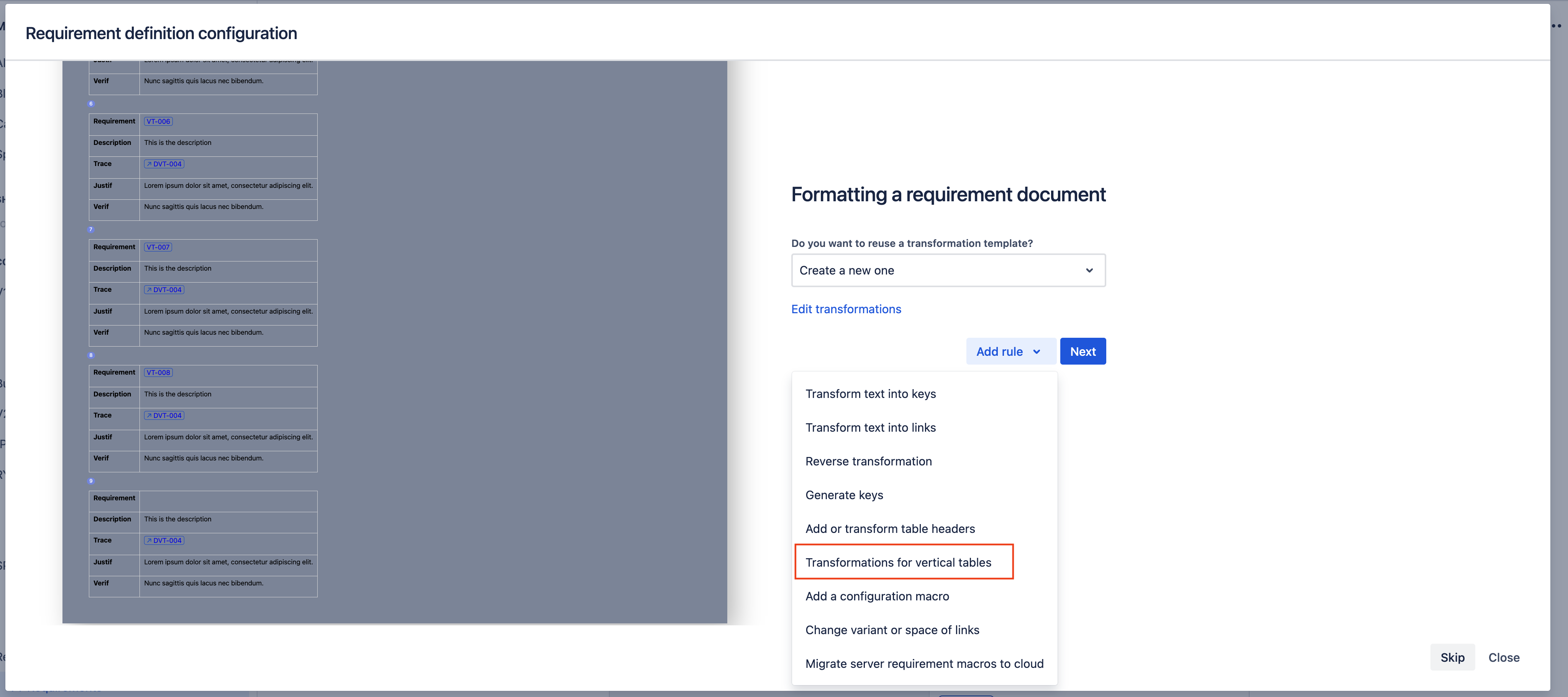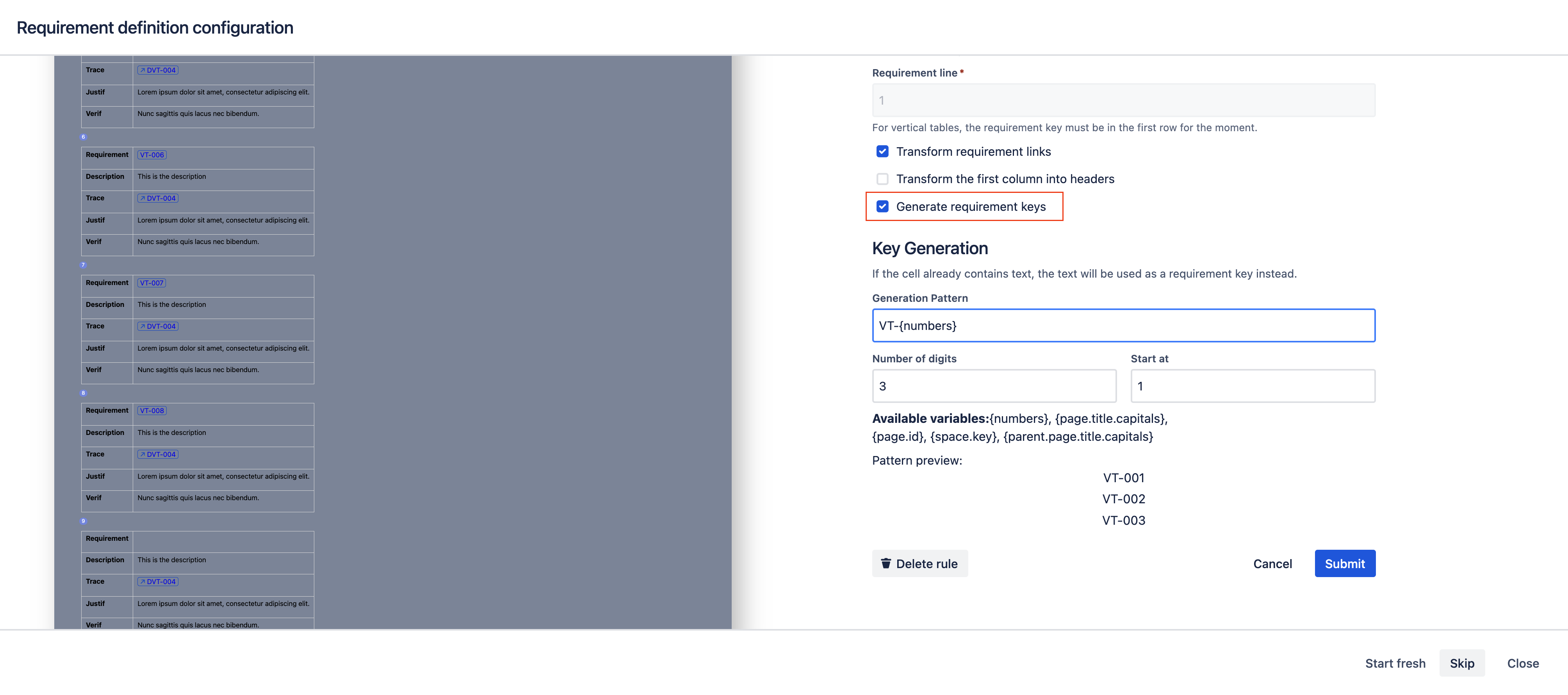When to use it?
-
When you have requirements defined in a vertical table (The first column contains property names, and the other columns contain 1 requirement per column)
-
When you want to transform requirement links in a vertical table
-
When you want to properly define your vertical table headers (See Headers transformation for more details)
Limitations
You won't have as many options when transforming a vertical table, but we recognize that sometimes the choice is dictated by external factors. We suggest defining requirements in horizontal tables to fully benefit from the transformation wizard.
-
This transformation is only usable on vertical tables, when other transformation rules would not work.
-
The requirement key must be in the first line.
Using the vertical table transformation
You can access the vertical table transformation from the summary step. Like other transformations, you can also save a transformation and reuse it in other pages.

Like with the other transformations, you can select the tables where you want to apply the headers transformation by clicking on the button and typing your selection.

-
Choosing the requirement line:
For now, only requirements in the first line of the table are able to be transformed and saved in our database.

Types of Transformations
Transform the requirement links
Case 1 - Into Requirement definition macro
If you want to create new requirements from written text, after an import for example, and you have put the key in the first line.
-
It will transform the written text in the first line into a requirement definition macro
Case 2 - Into Requirement link macro
If you want to transform a link to an already existing requirement, creating a dependency. They are seen in the requirement detail, and usable elsewhere in our application, like in the traceability matrix.
-
Transform already written text into requirement link macros
Transform the first row into headers
If you notice that requirements in vertical tables are missing properties, it may be related to table headers not being set up. Table headers are used by Requirement Yogi to identify properties and dependencies of your requirements.
-
Tick on
Transform the first column into headers
Generate requirements keys
If you want to generate keys on multiple vertical tables, because doing it with the inline creation is taking too much time.
-
Tick
Generate requirement keysand you'll be able to configure your key pattern.

Changing the plugin configuration
At the summary step before transforming the page, simply click on the rule you want to modify to edit it.
You can have several rules of the same type with different configurations
